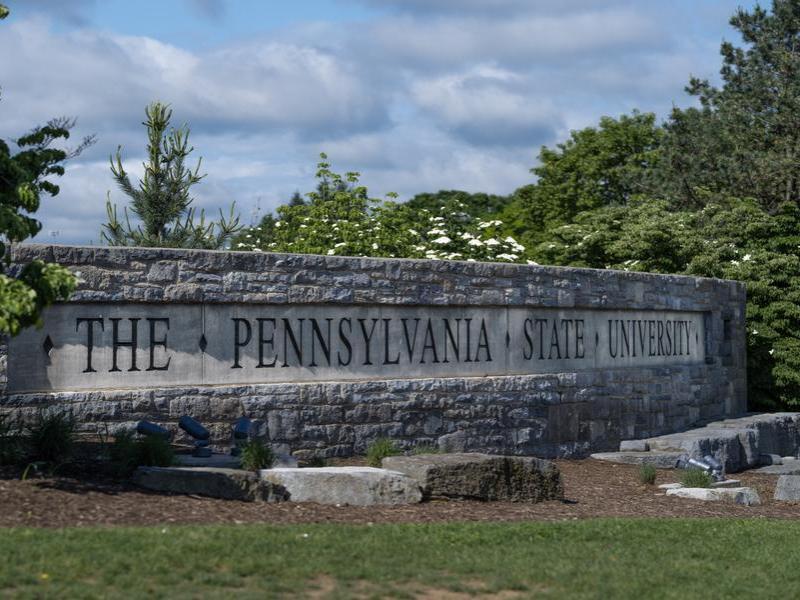
GAP funding provides principal investigators with essential support on technology commercialization, including intellectual property protection, go-to-market strategies, marketing assistance and connections to industry experts, along with feedback from industry professionals, investors and entrepreneurs. Credit: Penn State.
Engineering researchers awarded GAP funding to accelerate industry impact
June 13, 2025
Editor’s note: A version of this news story originally appeared on Penn State News.
UNIVERSITY PARK, Pa. — Eight research projects, including three from the College of Engineering, have been selected for support from the Penn State Commercialization GAP Fund. The GAP Fund is a competitive internal program designed to help promising technologies bridge the gap between academic research and industry adoption.
Funded by the Penn State Research Foundation and administered by the Office of Technology Transfer (OTT), the GAP Fund is the University’s only institution-wide initiative focused on identifying and accelerating high-potential technologies while they are still within the academic environment.
While government and university grants often fund fundamental discoveries, they may not support the crucial next steps needed to turn those discoveries into viable products, leaving a gap between academic research and a successful transition into industry. Conversely, industry investment typically occurs only after a technology has been sufficiently validated and de-risked, or assessed and adjusted to prevent potential financial loss. This creates a critical funding and development gap — where proof of concept, prototyping and early-stage validation must occur but often lack financial backing. The GAP fund addresses this challenge by providing targeted support to take the steps to de-risk promising technologies, elevate their technology readiness levels and position them for successful transition to industry.
“This year’s awardees represent the breadth and impact of Penn State’s research enterprise,” said Andrew Read, senior vice president for research at Penn State and president of the Penn State Research Foundation. “We are proud to support these innovative teams as they move discoveries from the lab to the marketplace, where they have the potential to improve lives and address global challenges.”
In addition to financial support of up to $75,000 per project, GAP funding provides principal investigators with essential support on technology commercialization, including intellectual property protection, go-to-market strategies, marketing assistance and connections to industry experts, along with feedback from industry professionals, investors and entrepreneurs. In partnership with external collaborators such as Ben Franklin Technology Partners, Life Sciences Greenhouse and 1855 Capital, the GAP Fund plays a central role in Penn State’s innovation ecosystem.
OTT collaborated with internal and external stakeholders, including industry experts, to review GAP proposals, evaluate oral presentations and select the final winners through a competitive vetting process.
The 2025 GAP Fund awardees from the College of Engineering are:
“Accurate Planning and Guidance of Bronchoscopy for Lung Cancer Management” — William Higgins, distinguished professor of electrical engineering
Bronchoscopy, a procedure used to examine the lungs and collect tissue samples, plays a critical role in early diagnosis and treatment of lung cancer. This project focuses on improving bronchoscopy planning and navigation by developing a more accurate system that enhances visualization and targeting. This technology aims to improve outcomes for patients by supporting more effective diagnosis and treatment of lung cancer.
“Innovative Cooling Software for Energy-Efficient Data Centers” — Wangda Zuo, professor of architectural engineering
Data centers are essential to the global digital economy but use large amounts of electricity to keep servers cool. This project explores how better design and control of cooling systems can reduce energy consumption while maintaining performance. The result could be significant cost savings.
“Targeted Regenerative Treatment for Osteoarthritis” — Fadia Kamal, associate professor of orthopedics and rehabilitation, and Amir Sheikhi, associate professor of chemical engineering and Dorothy Foehr Huck and J. Lloyd Huck Early Career Chair in Biomaterials and Regenerative Engineering
This research aims to create a new treatment for osteoarthritis by targeting inflammation and promoting tissue regeneration. This approach could slow and reverse disease progression and improve quality of life patients.
Read the full article and see all project winners here.

